Explore JFK’s Hidden Doomsday Bunker and the Challenges of Preserving this Historic Site
Discover a piece of presidential history—the Nantucket nuclear fallout shelter.
Efforts to make this historic site a National Historic Landmark has been put in motion, but have since stalled. Let’s join forces and ensure this unique piece of history can be preserved for generations to come.
The Missile Race Begins: Khrushchev's Challenge to the US
In November 1957, Nikita Khrushchev, Soviet Communist Party leader, issued a daring challenge to the United States. In a taunt to the government, he proudly declared the power of his nation’s long-range missiles and proposed a “peaceful rocket contest”, comparing it to a “rifle-shooting match”.
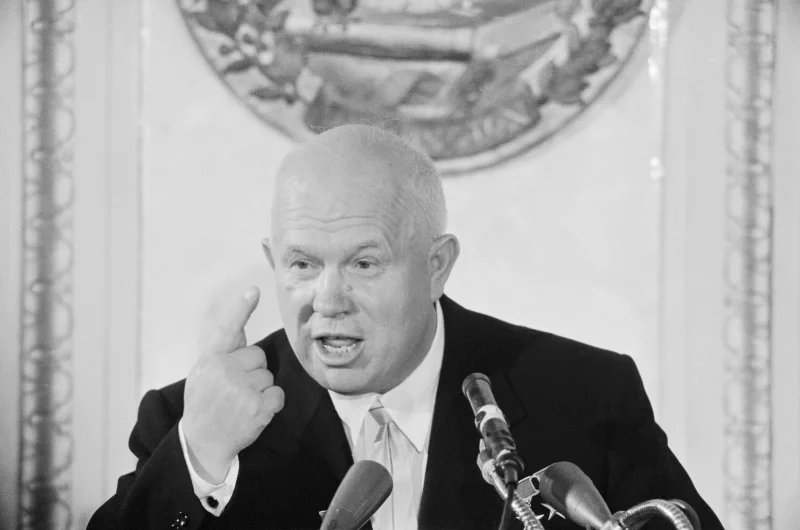
Source: Bettmann Archive/Getty Images
Khrushchev challenged the US to put their missiles to the test and prove which nation had the most powerful rockets. This marked the beginning of the Cold War Missile Race – a race that would stretch for decades and shape the course of history.
A Call to Action: John F. Kennedy Faced a Nuclear Crisis
In 1957, the world was shaken by the ominous words of Soviet premier Nikita Khrushchev: “We will bury you.” Four years later, the fear of nuclear war was a looming reality for the United States. With the election of John F. Kennedy, the nation was presented with the difficult question of how to respond to the Soviet Union’s increasingly tense relationship with America.

Source: National Archives
President Kennedy was undaunted in his pursuit of a peaceful resolution, and as the world watched, he courageously led the nation through this precarious moment in history.
Securing the Nation: Kennedy's Fallout Shelter Program
In May of that year, Nelson Rockefeller, chair of the Civil Defense Committee of the Conference of Governors, proposed an initiative to President Kennedy: a national fallout shelter program. Kennedy, understanding the importance of this program for the nation’s safety, secured a whopping $207 million in funding to get the project started.
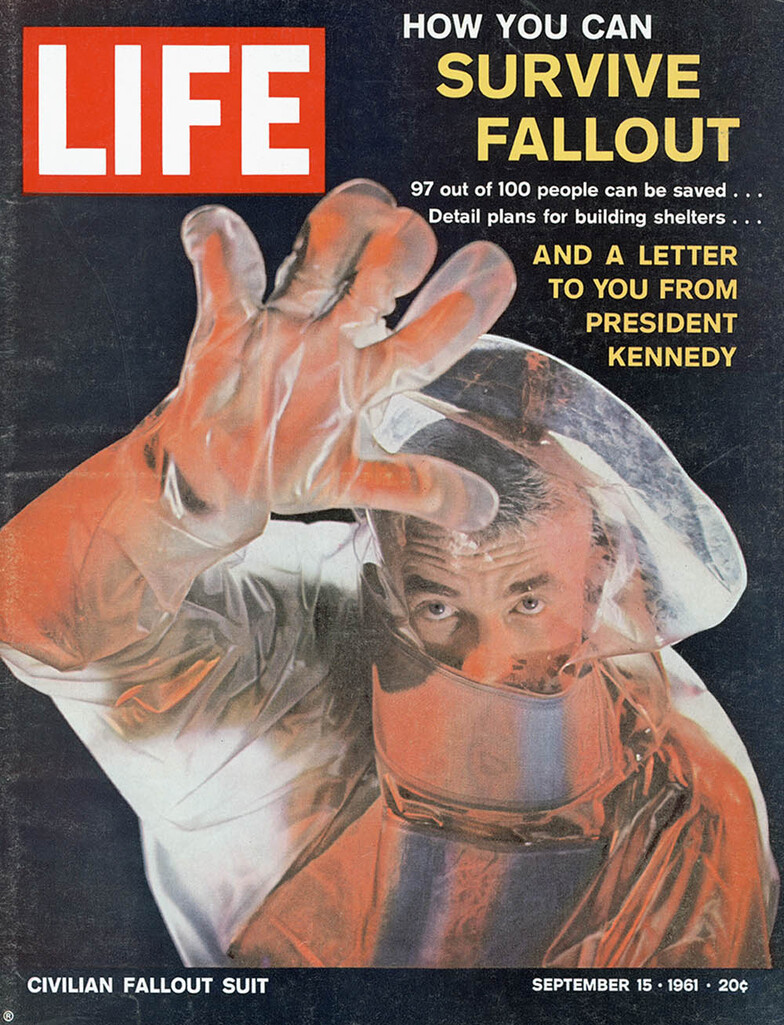
Source: LIFE Premium Collection via Getty
To identify potential bunkers, the federal government began surveying schools and other public buildings and marking them as shelters. Finally, these shelters were stocked with essential supplies to ensure the nation’s safety during a nuclear attack. Thanks to Kennedy’s Fallout Shelter Program, the nation was prepared for anything.
Prepare for Nuclear Attack: Get Ready for "Duck and Cover"
At the height of the Cold War, the threat of nuclear attack was a very real concern. As such, authorities implemented a number of measures to protect the population from the devastation of a nuclear blast. Public shelters were constructed, while citizens were encouraged to build their own shelters with government-provided instructions.
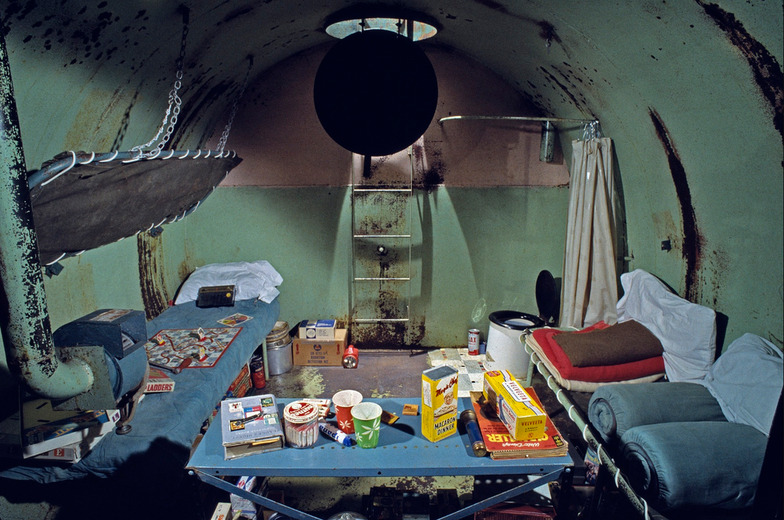
Source: NMAH
Schoolchildren took part in “duck and cover” drills, learning how to protect themselves in the event of a nuclear attack. Even if such homemade shelters may offer limited protection against an initial blast, they can provide some shelter from the radioactive fallout. So, as we prepare for nuclear attack, don’t forget to get ready for “duck and cover”!
Protecting Families in a Nuclear Age
John F. Kennedy understood that nuclear war was a real threat in 1962. In a televised speech on July 25, he encouraged families to take shelter if an attack was imminent and declared that it was the government’s responsibility to provide families with the means of protection. His administration established a fallout shelter loan program to help subsidize the construction of private bunkers.
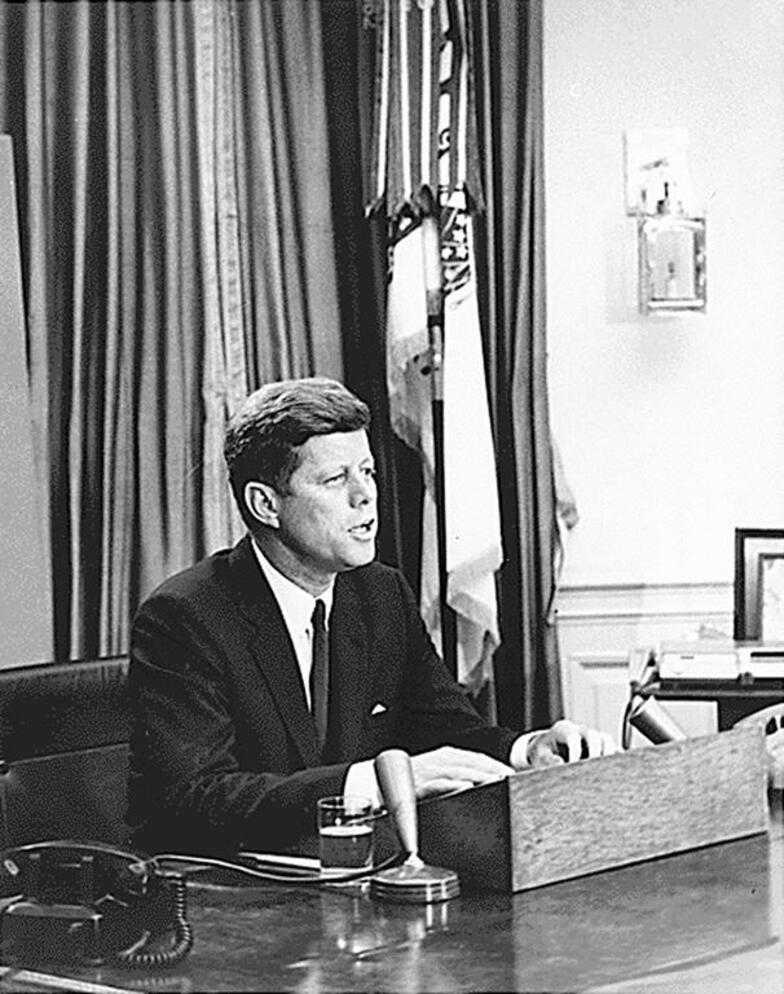
Source: John F. Kennedy Library (NLJFK), Boston, MA, Columbia Point. NLK. WHP. AR. AR7969E. 2T.
Kennedy knew that the lives of those families not hit by a nuclear blast or fire could still be saved with proper shelter and preparation. He stated, “We owe that kind of insurance to our families—and to our country.” In a nuclear age, protecting our families is of utmost importance.
The Kennedy Compound: A Symbol of American Camelot
For decades, the Kennedy Compound in Hyannis Port, Massachusetts was a symbol of the American Camelot. Home to the Kennedy Family since the 1920s, the Compound was a frequent destination for President John F. Kennedy and his first lady Jackie Kennedy, along with their two young children.
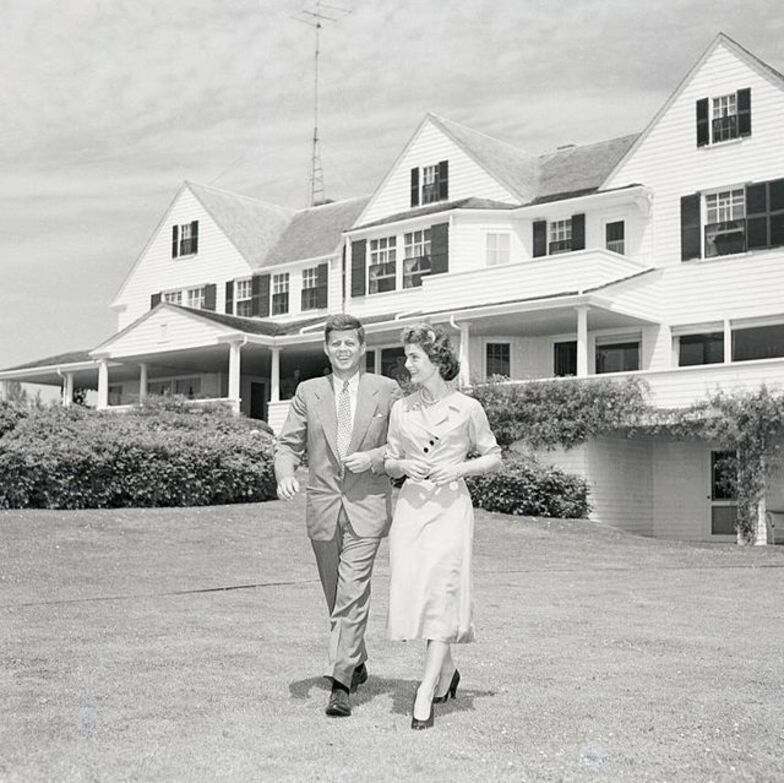
Source: Bettman Archive/Getty Images
Although the President had a busy schedule, he would visit the Compound as often as possible. This beloved residence was featured in magazines and on television programs and was a source of pride for the nation. With its iconic stature, the Kennedy Compound was truly a symbol of the American Camelot.
Secret Bunkers to Protect the President
In the face of a nuclear attack, the White House has deemed a potential target, leading to the construction of two secret bunkers. One was built on Nantucket, an island 30 miles out to sea, while the other was installed on Peanut Island, close to President Kennedy’s vacation home in Palm Beach, Florida.
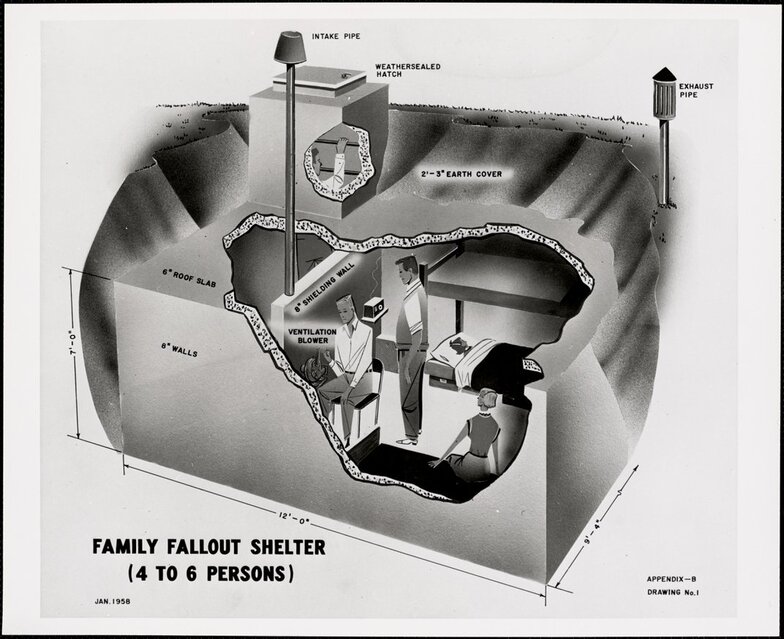
Source: Public domain via Digital Public Library of America
These bunkers had one purpose: to ensure the president had a safe place to continue running the US government should an attack occur. With these secret bunkers, the president would be able to lead the country in times of crisis, no matter where he was.
Preserving Historical Sites: The Fight to Save Two Shelters
The fight to save two shelters is on! Despite their current state of disrepair, there are efforts in place to protect and preserve their history. These include the possibility of transforming them into museums or securing their designation as National Historic Landmarks.
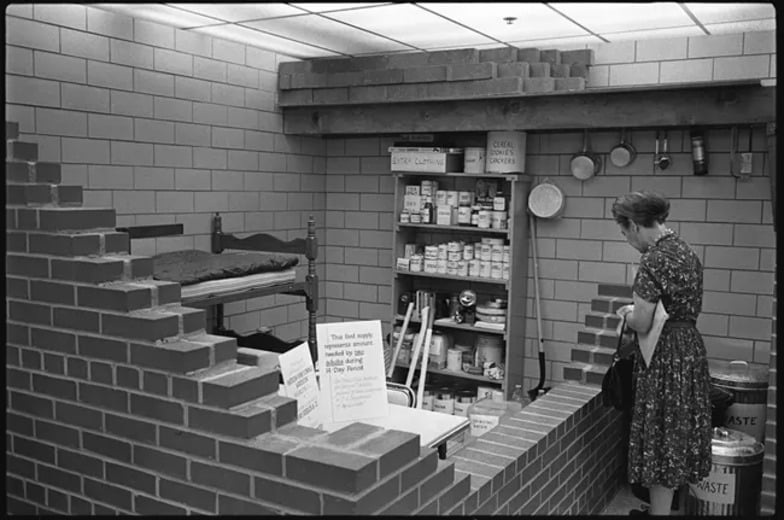
Source: Library of Congress (LC-DIG-ds-07442)
With the help and support of the community, these sites may be saved and their legacy kept alive. Let’s join forces and show our appreciation for the past by helping to safeguard the future of these shelters.
Uncovering the Secrets of Nantucket's Tom Nevers Naval Facility
For decades, the mysterious Tom Nevers Naval Facility on Nantucket has been shrouded in secrecy. Established in the early 1960s, the island’s 3,500 year-round residents were enticed by the intrigue of the top-secret submarine listening post. With little development around the military base, it was a seemingly isolated and otherworldly place.
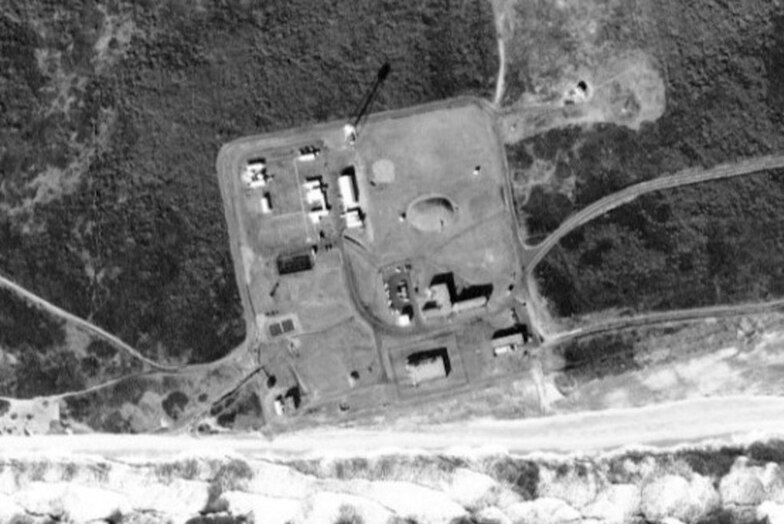
Source: Public Domain, U.S. Navy photograph
Robert Young, a third-generation resident, recalls: “No one lived out in [the] Tom Nevers area, so it was way out there for the locals.” As the years pass, the secrets of Tom Nevers Naval Facility remain, but one thing is certain – it’s a fascinating reminder of Nantucket’s past.
A Dedicated Teenager: The Milk Delivery Boy Who Never Gave Up
When he was just a teenager, Young had a daily mission – delivering milk to a facility. Despite delivering the necessary supplies every day, he was stopped at the guard station every single time and had to get cleared to pass.
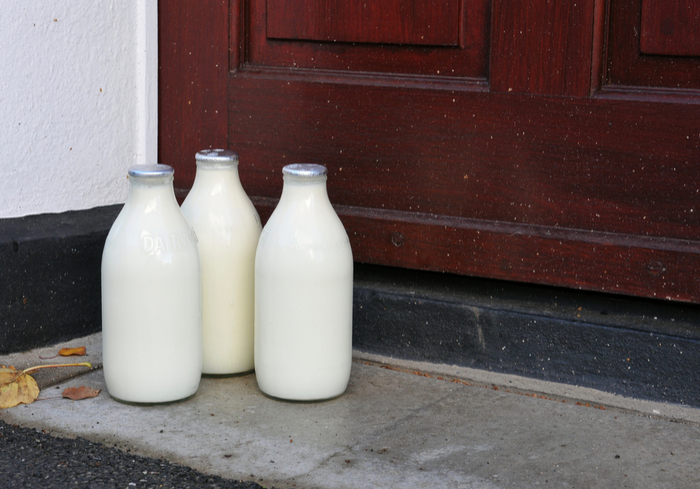
Young recalls the experience fondly, saying, “It was almost like a game for me- I was determined to get past the guard station no matter what and that kept me motivated.” His dedication and resilience are a testament to the hardworking spirit of the youth today.
Uncovering the Hidden Secrets of Nantucket
Discover the fascinating secrets behind Nantucket Island, located east of the continental U.S. It has a unique infrastructure that allows it to monitor ships and submarines passing through the Atlantic.
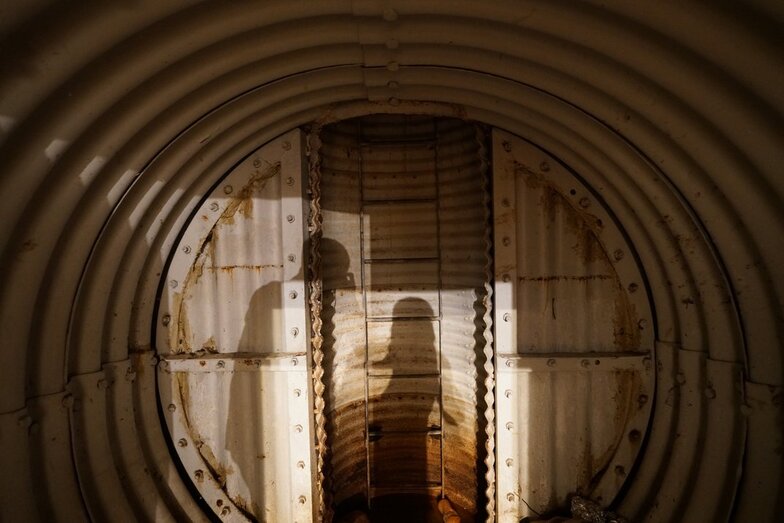
Source: Kit Noble
According to Bruce Percelay, a real estate developer and publisher of N Magazine, this was made possible by a web of copper wires right next to the bunker site, stretching out into the ocean to detect submarine propellers. With this in place, a bunker could be built without drawing the attention of year-round residents. Uncover the hidden secrets of Nantucket today!
Escape The Nuclear Apocalypse In Just 30 Minutes
As the Cold War loomed, President Kennedy had a plan in place in case of a nuclear attack—escape in just 30 minutes. Kennedy, his family, and 20 members of his cabinet would be quickly evacuated by submarine or helicopter to a bunker, where they would remain safe from any nuclear fallout for the first 30 days post-attack.

Source: Peter Sutters/Inquirer and Mirror
Author of Bunker: Building for the End Times, Bradley Garrett, explains that, in the event of nuclear war, those wishing to survive would have at most 30 minutes to reach the bunker. So if you want to survive a nuclear apocalypse, you better start planning now and be prepared to act fast.
Unveiling the Secret of JFK's Island Bunker
Hidden beneath the wild brush of Nantucket lies the secret of President John F. Kennedy’s island bunker. Initially, the naval builders had hoped to construct the bunker underground, but due to the island’s small size, they faced a challenge. The team got creative, using prefabricated wartime structures known as Quonset Huts to craft the bunker.
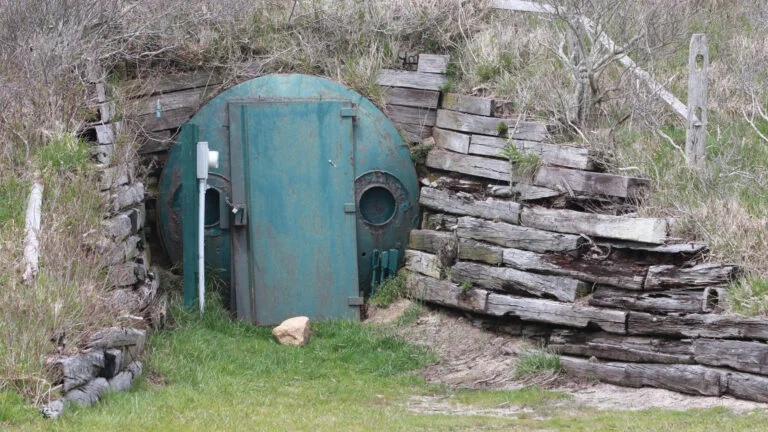
Source: Peter Sutters/Inquirer and Mirror
To add an extra layer of secrecy, they encouraged the wild shrubbery to grow over the galvanized steel. Today, Kennedy’s bunker remains hidden beneath the brush, a testament to the ingenuity of the builders.
Find Shelter During a Nuclear Disaster
Garrett has the perfect solution to surviving a nuclear disaster – build a shelter. Not just any shelter, but one that has three feet of dirt on top to protect you from harmful radiation. You can stay in this safe haven until the radiation levels have gone down.

With Garrett’s advice, you’ll be able to have peace of mind that you have a plan in case of a nuclear emergency. Don’t let fear consume you; be prepared with a shelter that will keep you safe!
Uniting a Community: The Construction of a 1,900 Sq Ft Shelter in Less Than Two Weeks
Under the Providence Journal, a remarkable feat of engineering was achieved in less than two weeks. A shelter spanning 1,900 square feet, partially underground and with a simple layout, was constructed to unite a community.
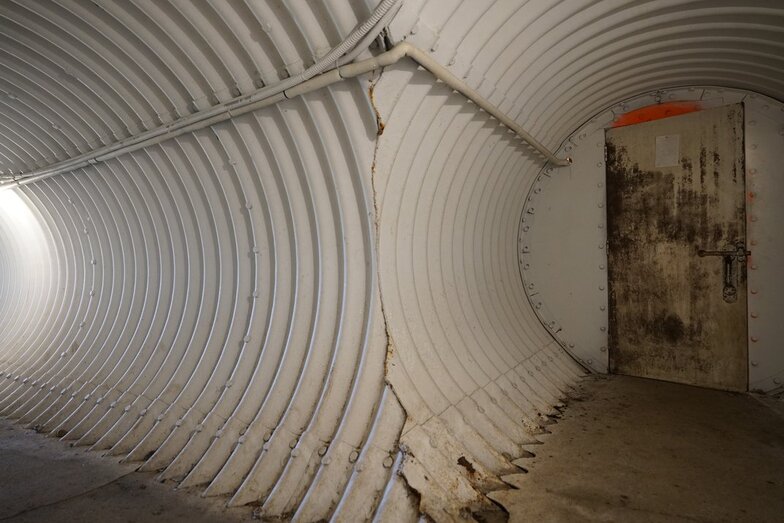
Source: Kit Noble
The bunker consists of a long metal corridor that ends in a three-way juncture, with one side opening into a mechanical room and the other leading to a central gathering space. This shelter, created in such a short period of time, will no doubt be a great asset to the community and a reminder of the power of collective effort.
Step Inside the Dr. Strangelove-like Nuclear Bunker
Experience a piece of Cold War history by stepping inside this nuclear bunker reminiscent of the Dr. Strangelove movie. Originally built with a decontamination chamber equipped with showers, anyone entering the bunker was to be cleansed of all nuclear materials and provided with new clothes.

However, this shelter was lacking in amenities, offering no permanent bathroom facilities, only portable toilets. Discover the secrets of this unique bunker and be transported back in time to the days of Cold War paranoia.
Averting Disaster: The Cuban Missile Crisis
The Cuban Missile Crisis of 1962 was a 13-day-long standoff between the United States and the Soviet Union. At the time, tensions between the two countries were high, leading to fear and distrust. The crisis was sparked when the Soviets installed nuclear-equipped missiles on the Caribbean island of Cuba, prompting the U.S. to respond in kind by putting their own missiles in Turkey.

Source: Corbis/Getty Images
Fortunately, the situation was resolved peacefully when Khrushchev agreed to remove the Cuban missiles, in exchange for the U.S. removing theirs in Turkey. This incident serves as a reminder of the power of diplomacy and a testament to the importance of averting disaster.
Narrowly Avoiding Nuclear War: The Unused Kennedy Bunker
Despite the Cold War’s tension and threats of nuclear war, the world managed to narrowly avoid it on multiple occasions, much to the surprise of bunker builders and doomsday preppers.
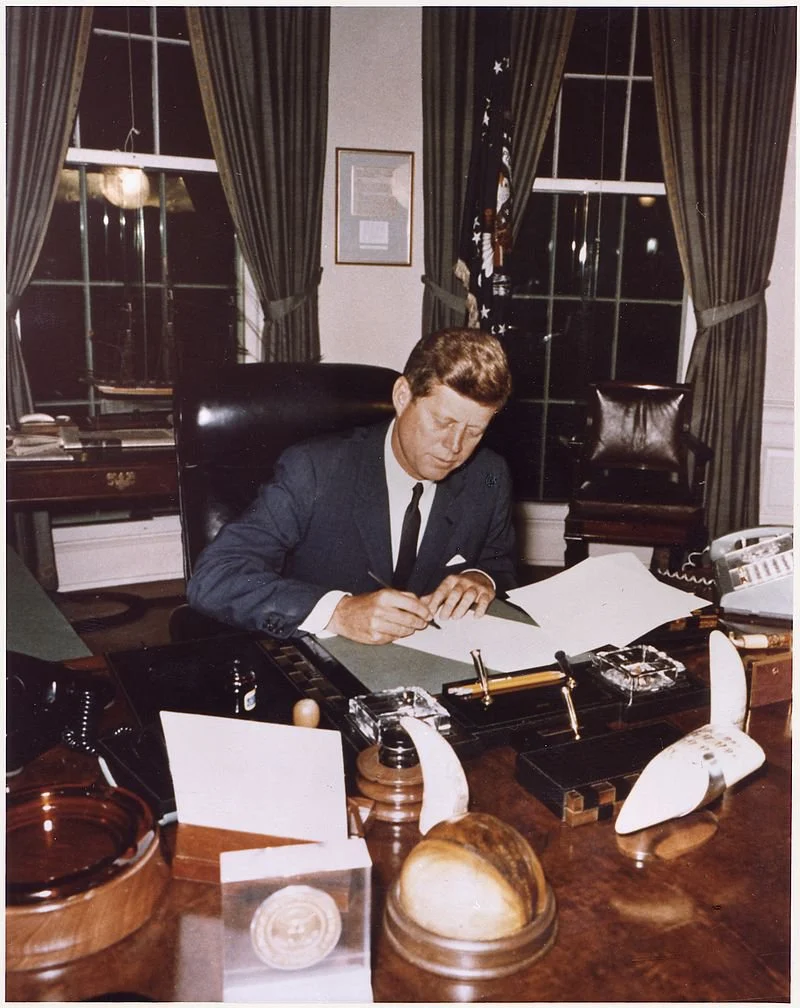
Source: Public domain via Wikimedia Commons
One such bunker was the one prepared for President Kennedy on Nantucket Island in 1962. Kennedy never used the bunker, and following his death in 1963, it was left largely untouched until the naval facility’s closing in 1976. It was a close call, but the world survived without ever needing to make use of the bunker.
Ready For Anything: Kennedy's Unused Bunker Ahead of the Curve
John F. Kennedy was ahead of his time when he had a fallout shelter installed on Nantucket grounds in 1961. Despite the Gallup poll finding that 93% of Americans had no plans to build their own shelters, Kennedy took no chances. While the bunker was never used, it showed he was prepared for the worst-case scenario.
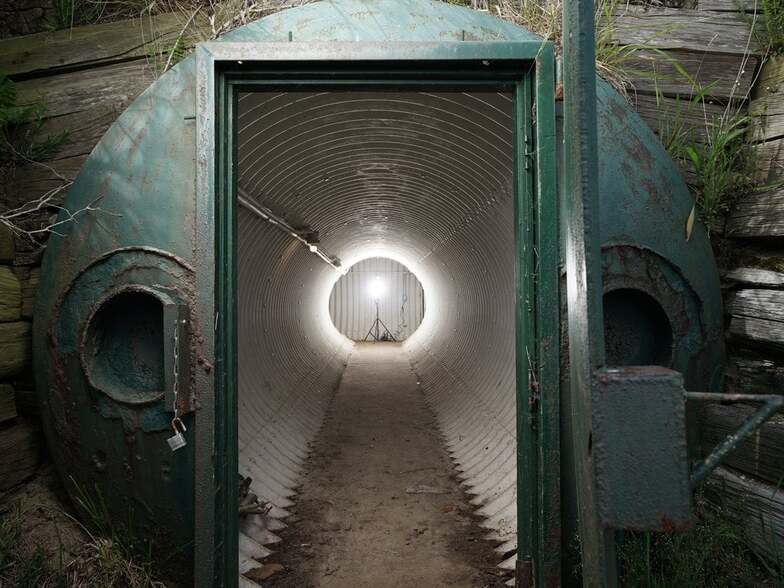
Source: Kit Noble
Bob Dylan’s 1962 song captured the sentiment of many, who would rather die than live in a nuclear-ravaged world. But Kennedy’s bunker shows that he was willing to take any measure to protect himself, his family, and the United States. Even if it was never used, his bunker was a testament to his readiness and foresight.
Exploring the Forgotten Bunker of Nantucket
For years, the abandoned bunker in Nantucket has served many purposes. It’s been used as a storage closet, a clubhouse for hunters, and a lookout point for spectators of demolition derbies held in the fields that used to be part of the naval facility. This forgotten bunker has certainly seen a lot of activity and it’s time to explore this hidden gem!
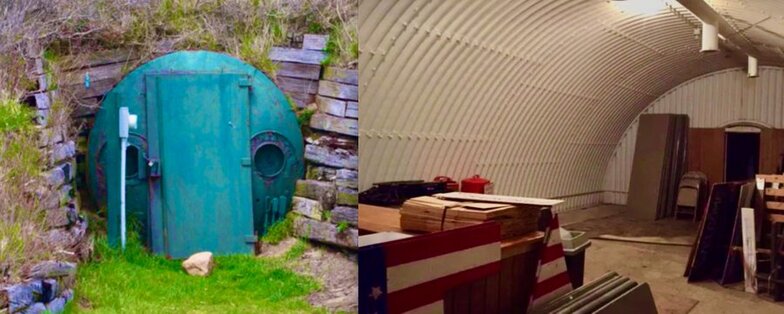
Source: @BeschlossDC/Twitter
From the hunters who gather to exchange stories, to the spectators cheering on their favorite competitors, the bunker has been witness to a variety of activities. Its forgotten walls are sure to hold many secrets from the past and present. Why not take a trip to Nantucket and uncover the mysteries of this unique location?
Unused Potential - The Mysterious Nantucket Bunker
For over 40 years, the mysterious Nantucket Bunker has been hidden beneath 26 acres of oceanfront properties. Purchased from the U.S. Navy in 1980 and tightly secured, the bunker is closed to the public and currently sits empty. Despite its protective measures, the bunker has been the target of break-in attempts, mostly by local teenagers looking for a place to hang out with their friends.
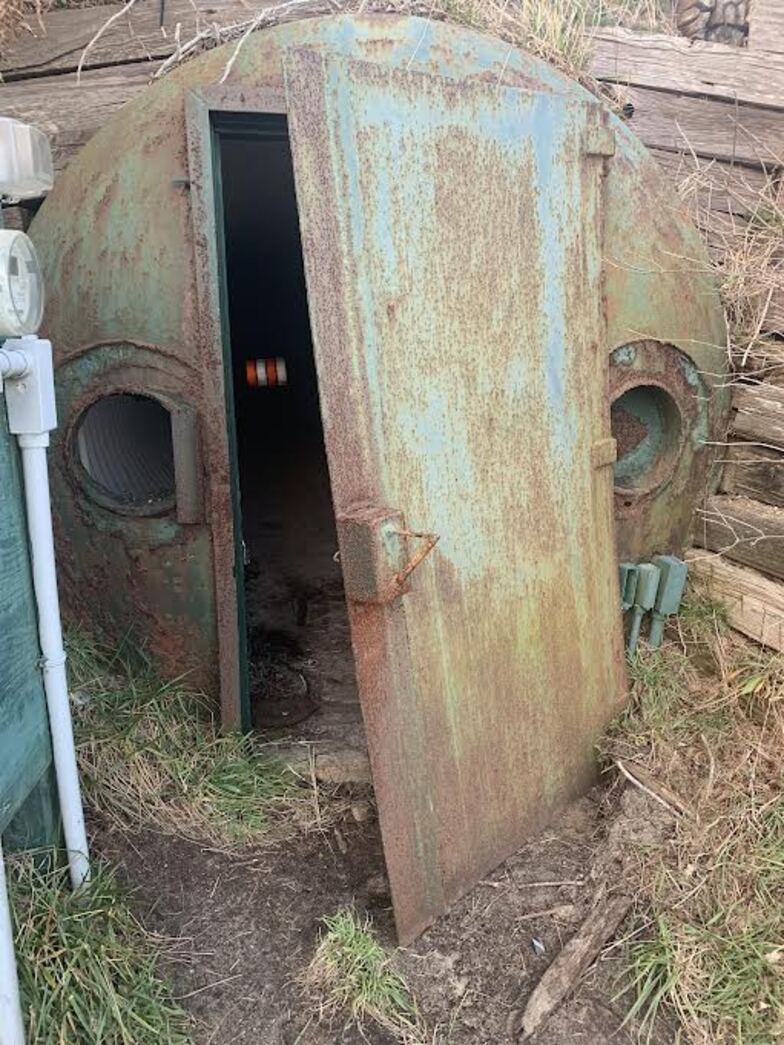
Then, in December 2021, a vandal ripped the shelter’s metal doors from their hinges, potentially with the aid of a vehicle. This 26 acres of land holds so much potential, yet all we can do is wonder what secrets lay hidden within the walls of the Nantucket Bunker.
Restoring History: Kennedy’s Daughter and Friend Work Together to Revive Old Bunker
Bruce Percelay never forgot the forgotten bunker, and now he has a plan to restore it. After publishing an article about the long-neglected site in 2018, he is determined to bring it back to life. With the help of his friend Caroline Kennedy, daughter of the 35th President, they are hoping to make the project a reality.

Source: Pinterest
Bruce is confident that with Caroline’s support, the bunker can be restored and honored in its former glory. Together, they want to make sure that this important part of history is not forgotten, and that it can be enjoyed by generations to come.
Preserving a Piece of History
Joseph Kennedy III, grandnephew of John F. Kennedy, speaks of the importance of remembering and preserving a piece of our nation’s history – the Kennedy Bunker. Built during a time of great danger, Joseph believes that preserving the bunker will be a benefit to those wanting to learn more about this period.
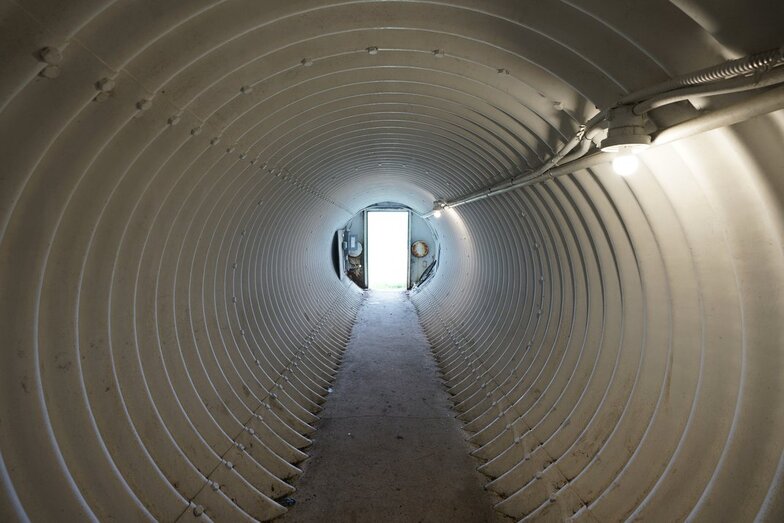
Source: Kit Noble
He states, “It’s an important reminder of where we have come from and how far we have progressed.” By visiting the bunker and learning about this piece of history, we can appreciate the safety and stability of today’s society.
Nantucket Bunker Awaits National Historic Landmark Designation
Local officials in Nantucket have been in the dark since October when the National Park Service released a study that identified the Nantucket bunker as a Cold War defensive site that may be eligible for National Historic Landmark designation. Charles Polachi, parks and recreation manager for the Town of Nantucket, has revealed that no further information has been received from any federal agency since the study was released.
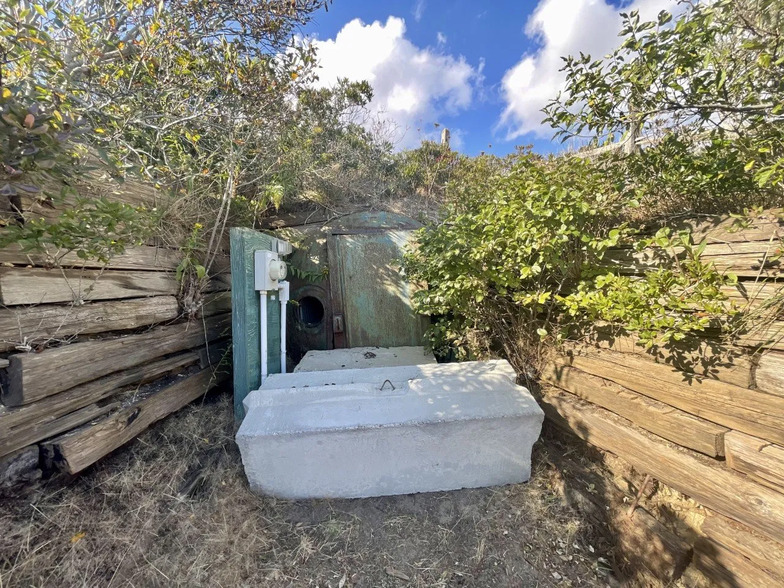
This historic bunker, located along the coast of Massachusetts, is an important reminder of the Cold War and is deserving of the National Historic Landmark designation. It is now up to the federal agencies and local officials to work together to ensure this important site is officially recognized.
Uncovering Hidden Potential at Tom Nevers Park
Cheryl Emery had a vision for rejuvenating Tom Nevers Park, but the historic bunker on its grounds posed a problem. How could she incorporate it into her plan? With a bit of creative thinking, she found the answer.
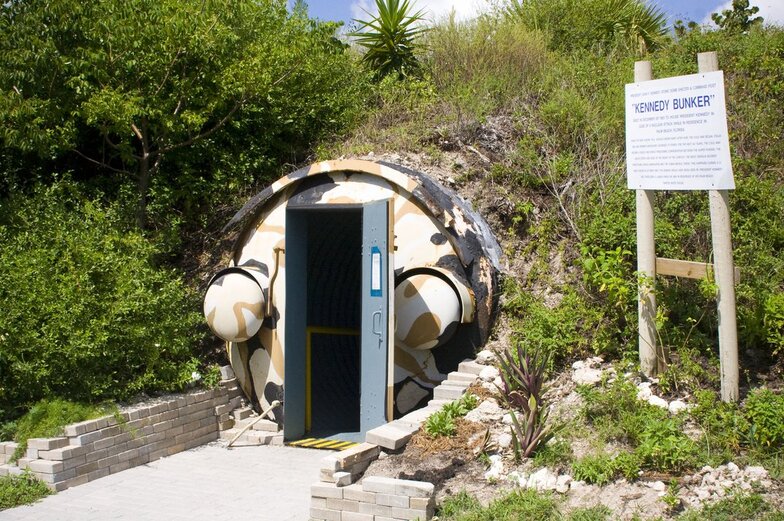
Source: Willy Volk via Flickr under CC BY-NC-SA 2.0
After “Googling ‘what to do with a bunker,'” Emery joined forces with island residents to create a plan for the park that would make the most of its hidden potential. Before the Covid-19 pandemic, the project was underway, and now it’s time to see the results.
